This post contains affiliate links.

As you are contemplating whether or not to start taking piano lessons, you may wonder how a piano lesson usually goes. What is a student taught during lessons and is the lesson structured?
Most of the lesson time will be used to work on piano pieces. You’ll also learn music theory, practise scales, chords and arpeggios and do sight-reading exercises during classes. Teachers will spend the last 1-2 minutes of class assigning homework.
In this article, I’ll go into detail on how a typical piano lesson goes, from when the lesson starts until it ends. I’ll also explain how the lesson structure can be different depending on your skills with the piano (beginner, intermediate, advanced) and how long the lessons are (30, 45, 60 minutes).
I’ll also go through how a virtual piano lesson that’s done through Zoom or Skype works and explain some differences between lessons done virtually vs in person.
If you’re still deciding between taking or not taking piano lessons, I’ll give you some reasons why you must take lessons if you’re serious about playing the piano.
How does a piano lesson go for a beginner?
As a completely new beginner with 0 experience with the piano, your lesson will work differently compared to people with more experience with the piano.
You’ll spend all of the lesson’s time working on the basics like familiarizing yourself with the sheet music’s layout, understanding what all the symbols and dots on the sheet mean, learn how to play simple tunes with both right and left hands at the same time.
Many piano teachers will choose to have you work through children’s workbooks at the beginning since they are very beginner-friendly, and are structured to teach you all the basics in a logical manner, introduce a new concept and help you understand by having you play through simple tunes. As you get deeper into the book, more difficult concepts are introduced and the tunes will get harder.
Here’s an example of a workbook I did when I first started learning the piano. If you’re interested, you can get this book here (affiliate link) on Amazon.
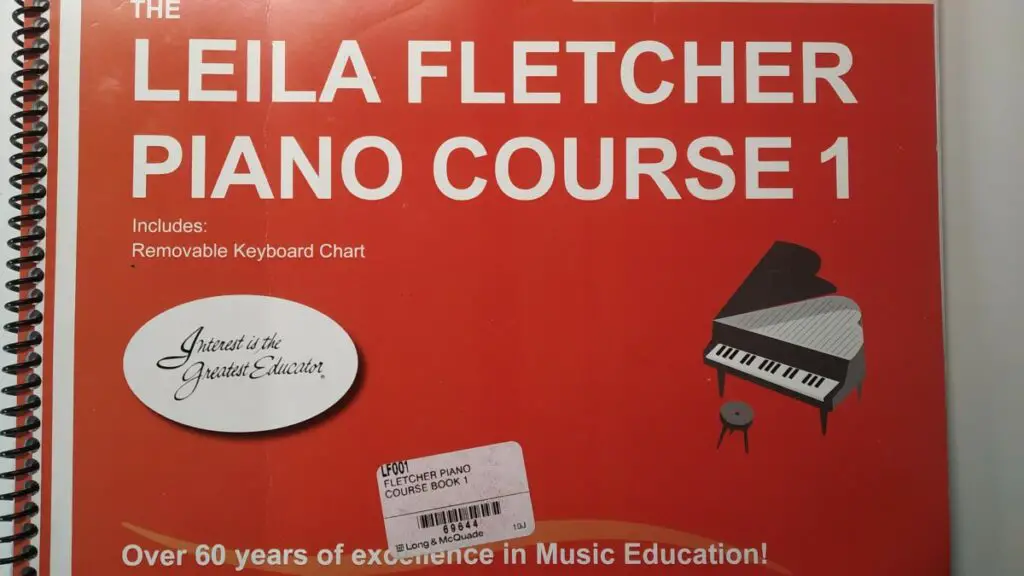
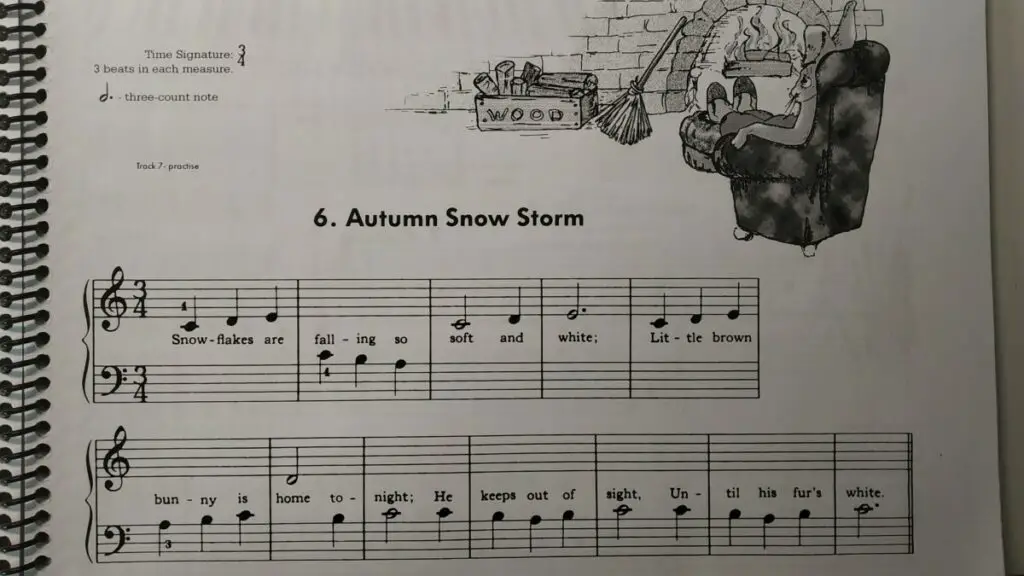
Regardless of whether you choose the 30, 45 or 60 minutes option, as a beginner, you’ll spend the entirety of the lesson working through the workbook with your teacher, with your teacher explaining new concepts as they show up and answer any questions or clear up any confusions you have.
These workbooks typically have multiple levels to them (1,2, 3, etc) and your teacher will have you go through a couple of these until they decide you have learned enough basics and are ready to learn to play piano pieces.
If you’re having trouble deciding on how long you want your lesson to be, I wrote an article that can help: The Perfect Length for Piano Lesson – A Handy Guide
What happens in a piano lesson for intermediate and up students?
Once you’re skilled enough with the piano and your teacher deem you ready, you’ll move on to playing piano pieces. Depending on how flexible your teacher is, you’ll either learn classical piano pieces or are allowed to choose your piece or song to play.
Unless your teacher is strict or came from a prestigious institution, most teachers will allow you to choose your favourite piece to learn, since that’s the best way to motivate a student to practice and learn the piano.
However, if you want to progress quickly with the piano, choosing classical to learn is better than choosing pop songs since classical pieces require more skills and techniques to master.
Furthermore, if you choose to do classical, your teacher can recommend the appropriate piece based on your level and what you need to improve on since they most likely learnt classical when they were a student.
Regardless of which piece you want to learn, you will find playing actual pieces is harder than playing simple tunes in a children’s workbook as you learn new things like how to properly use the sustain pedal when playing (you can’t just step on the pedal throughout the whole piece)
Or you may have trouble figuring out the rhythms of a piece or what fingering position you should use. You can also find it hard to play a sequence of chords in succession or play a melody without hitting the wrong notes or accidentally hitting nearby notes. This is where technical training comes in handy:
Aside from working on piano pieces during lessons, your teacher will have you learn and practice scales, chords and arpeggios to develop strengths in your fingers, wrists and arms, along with proper fingerings on the piano.
For practicing scales, you want to get to the point where you can play them quickly, at 120 BPM:
To play scales correctly, you need to be precise and hit the correct notes. As you increase the speed, it’ll be harder and thus, better at developing finger strengths. Some piano pieces have sections that are variations of some scales so knowing how to do scales is helpful.
By learning chords, you’ll be able to identify them when you see them in pieces. This makes it easier to play since you won’t need to figure out the individual notes that make up that chord every time you see it.
Also, optionally, if you want to deepen your understanding of music and want to learn how it works, you can ask your teacher to have you work on a theory book and have your teacher check your work every week.
A lot of people find this boring and truth be told, it is. It’s the equivalent of school homework. But if you can stomach and get through it, you’ll have a better understanding of the workings of piano music, making playing the piano a lot easier.
Here’s what a theory book looks like and what you can expect to learn from it:
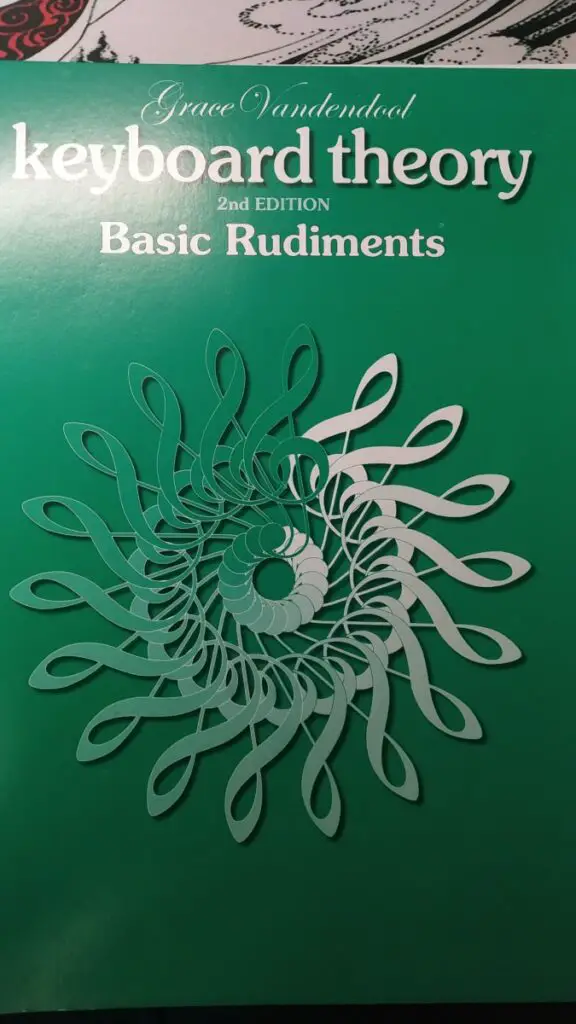
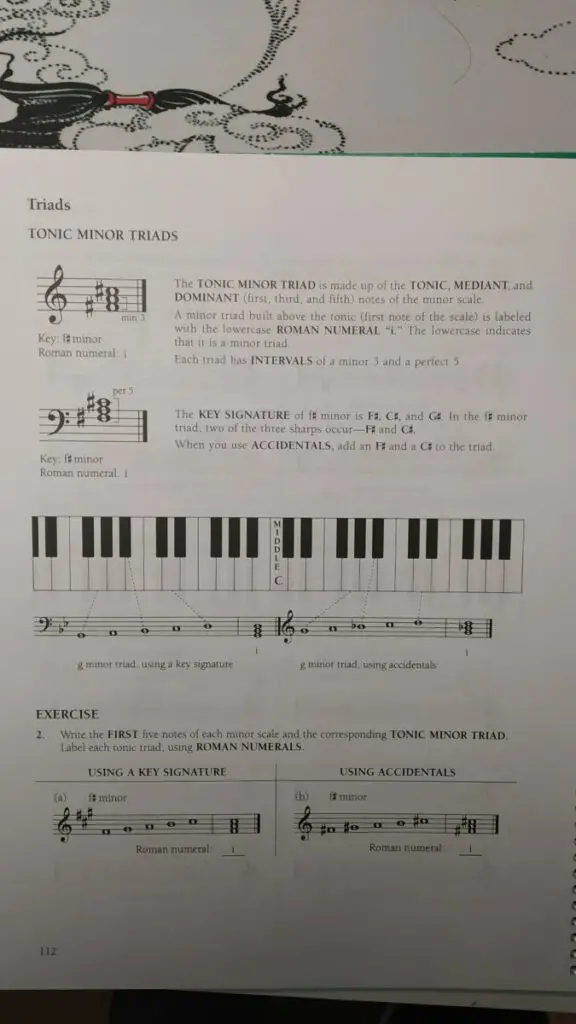
Your teacher may also give you sight-reading exercises to do. Sight-reading is where you scan a piece of sheet music once to somewhat familiarize yourself with it before reading the sheet and playing it on the piano at the same time.
Sight-reading is a lot harder than it sounds since your brain has to process a lot of information from the sheet music while simultaneously playing it on the piano, making it easier to make mistakes. You don’t get to practice and only have one chance at playing the tune/piece.
This is why many students at a particular RCM level, can only sight-read tunes/pieces a couple of levels below their level.
The goal of sight-reading exercises is to get you to the point where you can take songs/pieces requests at parties, scan them once, then play them on the spot with little difficulty.
How does a piano lesson go for intermediate and up students?
First 5-10 minutes – music theory (optional)
If you choose to go through a theory book with your teacher, the first 5-10 minutes of every class will be spent on checking for mistakes in the parts you did for the week and starting a new topic or chapter where your teacher explains the concepts.
Tip: If you’re doing 30 minutes lessons, to save time and focus on learning new materials, you can ask your teacher if it’s okay to send your work during the week to them by email so they can grade it outside of class. This is to make sure you spend more time in class learning new things.
Next 10 minutes – warm-up
For the next 10 minutes of class, you’ll warm up your hands by going through different scales. Your teacher may have you do different exercises like playing scales in two octaves or your right-hand plays the scale ascendingly while your left play descendingly, instead of both hands going up or down the scale.
Or your teacher can have you play the scale off-beat – where you hit a note in the scale in between the 2 ticks on a metronome – this is harder to pull off than it sounds.
During this time, your teacher will decide whether or not to teach you a new scale, depending on how good you are with your current scales.
Next 10 minutes – sight-reading
Your teacher will either give you tunes for you to sight-read or have you buy dedicated workbooks like the RCM Sight Reading books (affiliate link) to have you work through
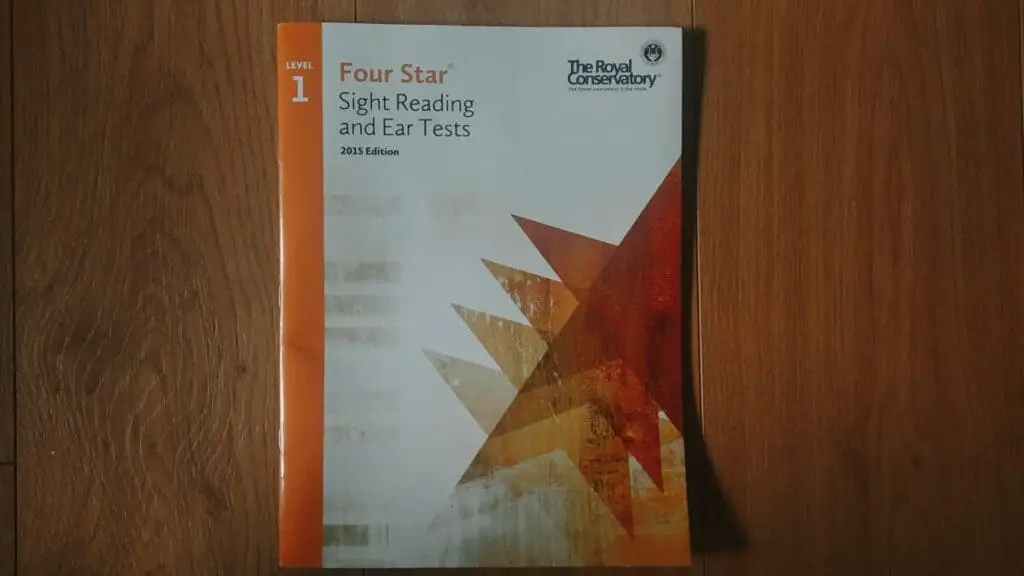
You’ll be given one minute to scan the tune before playing it. You’ll for sure make mistakes like hitting wrong notes. However, ignore them and keep playing until the end. Once finished, the teacher will offer their thoughts and advice on what you should on to improve your sight-reading ability.
For the rest of the lesson – work on piano pieces
For the rest of the lesson, you’ll play the parts that you’ve practiced at home to your teacher so they can decide to either move on to the next part of the piece or fix mistakes and continue working on the current part of the piece if you still have troubles with it.
If you choose to have longer lessons like 45 or 60 minutes, you’ll end up having more time to work on the piece.
However, regardless of how long your lesson is, to make sure you get the most bang out of your bucks, you must spend time practicing your piece every day. It doesn’t have to be long, it could just be 15 minutes every day but you must make it into a routine.
Having a routine makes sure that you’re committed to learning the piano and makes it easier to motivate yourself to practice the piano. 15 minutes every day is better than practicing 2-3 hours for one day, then doing nothing for the rest of the week.
When practicing your piece, make sure to not only practice what you and your teacher went through in class but to move on to the next section and try your best to work out the parts that you can, then bring the part that you are stuck on to class to work on it with your teacher.
In this way, you make sure that you won’t waste any class time working on the parts that you can easily work out yourself. Lesson time should be spent working on hard parts that you have trouble with or answering questions or concerns you have.
Last 1-2 minutes – assigning homework
Teachers will spend the final 1-2 minutes of class wrapping up and assigning you “homework” – what you need to work on at home during the week before the next class. This could include practicing a new scale you just learnt, working on your piano piece, and doing your theory book.
What happens in a piano lesson done through Zoom or Skype?
Piano lessons done virtually are becoming more popular and widely accepted ever since the pandemic started. In general, piano lessons done virtually work the same way one is done in person, just through a screen.
If the teacher wants to demonstrate something, you’ll watch them demonstrate it on their own piano through the screen, instead of the teacher playing directly on the same piano as you are.
Also instead of having to go to class, either your teacher or you can host a meeting through Zoom and join from there to start the lesson. Once the lesson is finished, both will leave the room. This will save both you and your teacher time commuting.
However, some aspects of virtual lessons make them less efficient for learning compared to lessons done in person:
Only one view angle of the student
Through a screen, a teacher only has one viewing angle of the student, making it hard to see the student’s hands and fingerings on the keyboard since one hand may be obstructing the view of the other hand.
This makes it harder for the teacher to spot any mistakes a student may make compared to in-person, where a teacher can just move to have a clearer view of the student’s hands and fingerings.
The audio has to be clear
Since viewing angles are limited in piano lessons done virtually, teachers have to rely more on sounds to identify any false notes or other mistakes the student may be making. That’s why having clear and crisp audio is important for virtual lessons.
Luckily, technology has come a long way and microphones on phones nowadays are pretty decent and are good enough for virtual piano lessons. Most iPhones, even older generations like the iPhone 6, have decent microphones for lessons.
If your teacher complains that the audio isn’t clear enough, you will need to buy an external microphone to plug into your laptop and have your lesson that way.
If you’re looking for a microphone for your piano lesson, I recommend taking a look at the Logitech Blue Snowball mic (affiliate link). It has a decent sound quality for the price and piano sounds come out crisp and clear.
Internet problem
Since the lesson is done online, it makes sense that a fast internet connection is very important. Nothing could be worse than having an internet problem in the middle of class, making both you and your teacher waste class time figuring out which side is the problem coming from and wasting even more time fixing it.
This type of problem would never appear in a lesson done in person.
With that said, if you’re also looking into piano lessons done virtually to save some money, I wrote an article detailing everything you need to know about them to help you make the best decision for yourself: Virtual Piano Lessons – Everything You Need to Know.
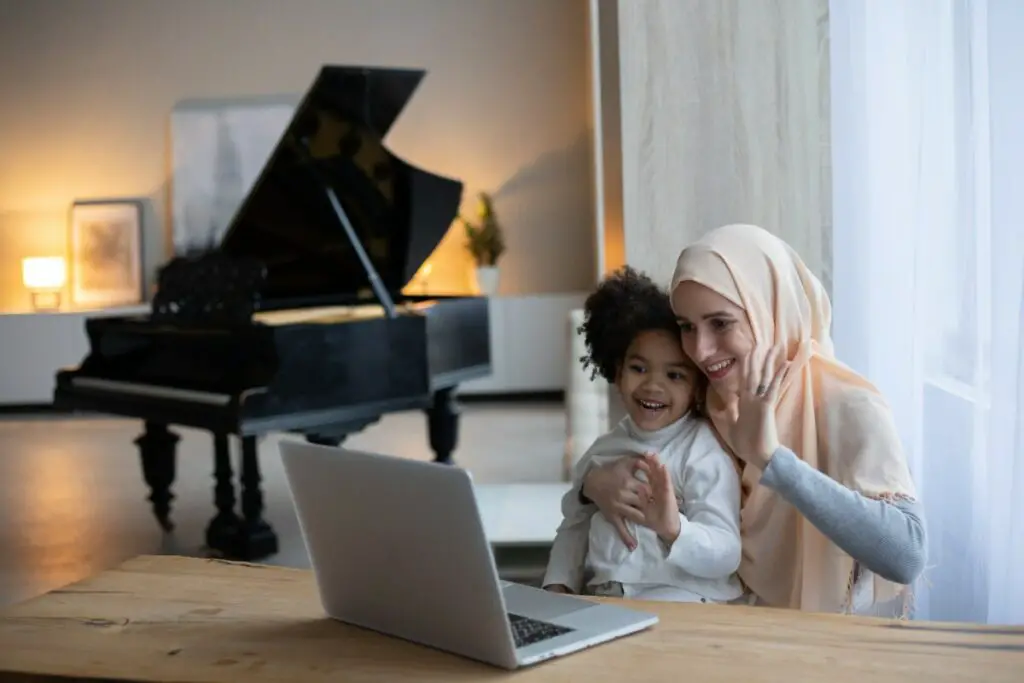
Reasons why you should take piano lessons
Piano lessons are expensive. If you’re wondering if you should take piano lessons, know that a piano teacher can offer you a lot that can help improve your playing skills, making the price worth it.
Develop correct skills and techniques
There is a lot of technique and finesse required to play piano, especially harder pieces. Better techniques allow you to play the piano more expressively to convey your emotions through piano sounds.
The piano is a very hands-on hobby. You can’t just copy someone’s technique by simply watching them through Youtube videos. Not to mention you could be doing wrong. This is where a teacher comes in to show you the correct techniques and correct any mistakes you make.
Mistakes get corrected right away
By taking piano lessons, you have a teacher that can spot and correct any mistake you make right away. preventing it from becoming a bad habit that could take months or years to undo if left alone.
Have your questions answered right away
If you teach yourself the piano, the only way to get any questions you may have answered to by searching the Internet. If the answer you’re searching for isn’t on the Internet, then you have to ask them in forums like Reddit.
It could take hours or even days before your question is answered on a forum. Not to mention information on the Internet may not always be correct.
Now you see how convenient it is to have a teacher sitting right next to you, answering any question that may pop up in your hand immediately.
Keep you motivated
Having a piano teacher that gives you homework to work on every week gives you a clear goal and motivates you to sit down and practice the piano. A person that self-teach piano may find it difficult to find the motivation to practice piano since there’s no rush to do so.
With that said, there are situations where self-teaching yourself the piano is the better option. I discuss it more in this article Piano Lessons or Teach Yourself – Choosing What’s Best For You.


